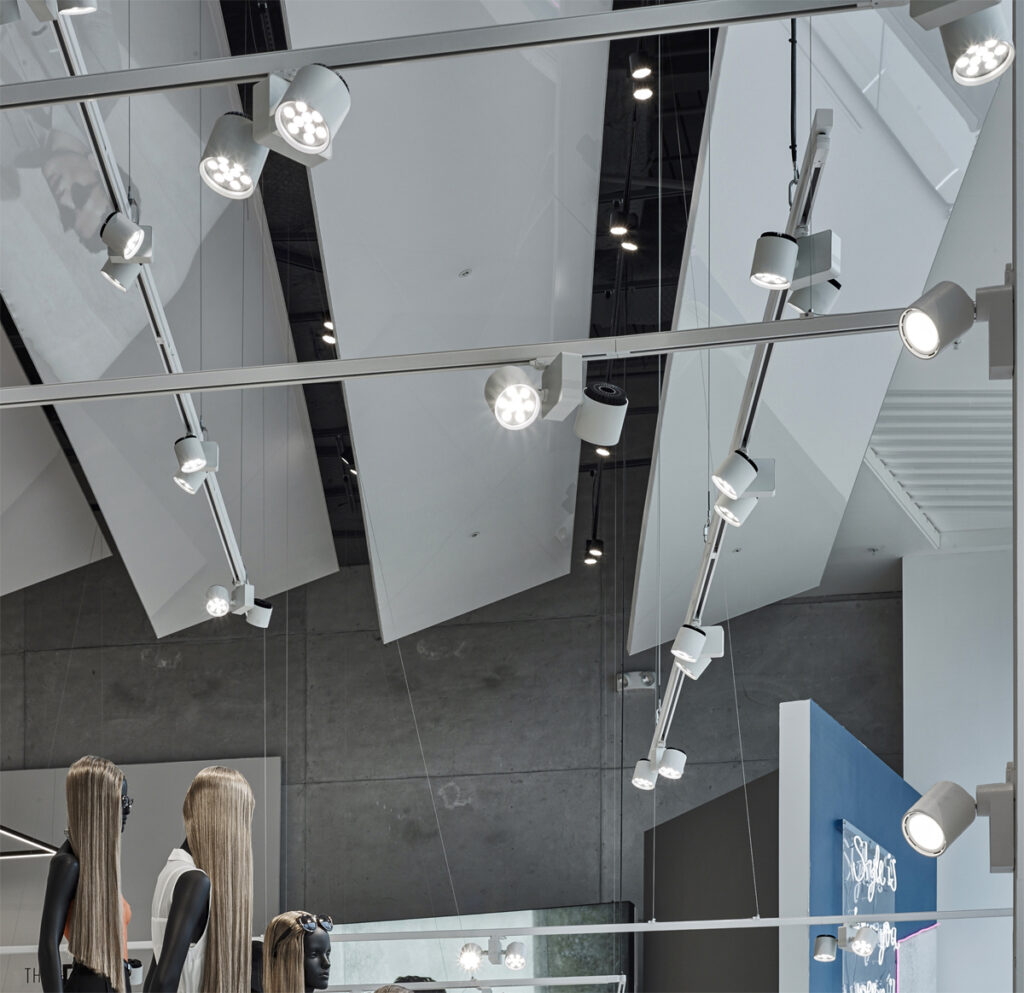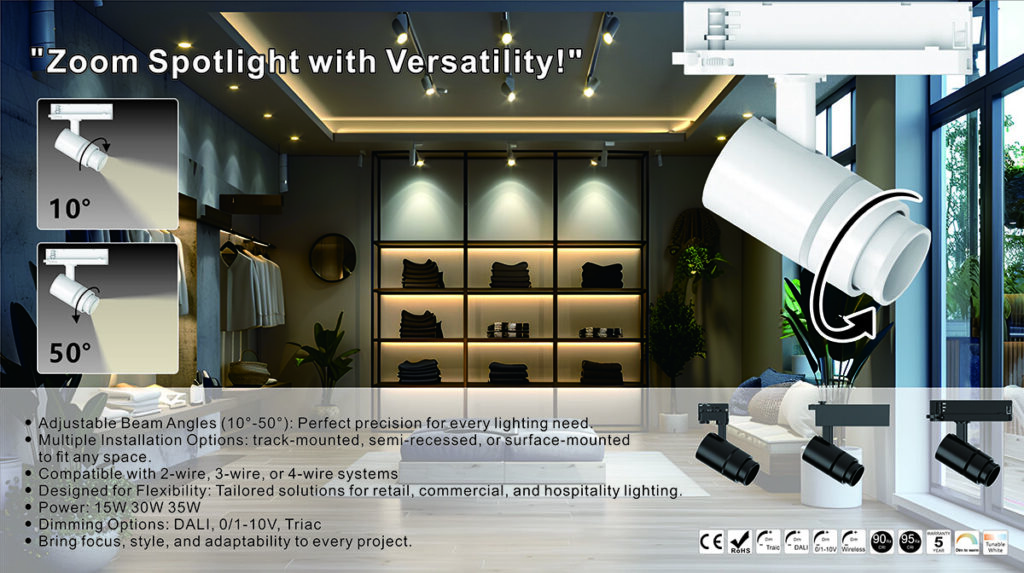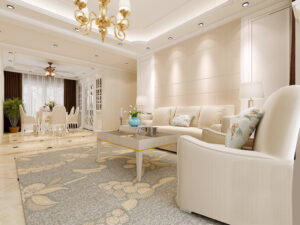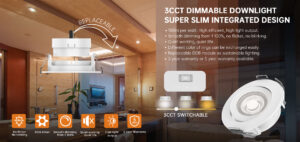Track lighting systems have transcended their utilitarian origins to become a cornerstone of modern interior design, offering unparalleled flexibility and aesthetic appeal.
In 2025, advancements in LED technology, coupled with the rise of smart home integration and sustainable design principles, have propelled track lighting into a new era of innovation. This comprehensive guide delves into the world of track lighting, exploring its myriad benefits, diverse applications, and the latest trends shaping the market, particularly in European countries such as Germany, the Netherlands, France, Sweden, Denmark, Norway, and the United Kingdom, where design sensibilities meet cutting-edge technology.
What is Track Lighting?
Track lighting is a versatile illumination method where multiple light fixtures, often called heads or lamps, are mounted on a continuous track containing electrical conductors. This track, typically affixed to a ceiling or wall, acts as a central power source for several lights, streamlining the electrical connection process. The true ingenuity of track lighting lies in its adjustability; individual light heads can be strategically positioned along the track and precisely aimed, allowing for tailored lighting designs.
This adaptability makes track lighting perfect for evolving needs or dynamic illumination. Whether highlighting artwork in a gallery or providing focused task lighting in a kitchen, the ability to direct light precisely where it’s needed makes track lighting a powerful tool for creating the desired ambiance and functionality.
Why Should We Choose Track Lighting Systems
Track lighting systems offer a multitude of advantages, securing their popularity across diverse applications. The adaptability of track lighting is perhaps its most significant benefit, as it allows for creating customized lighting schemes that can be easily adapted to changing needs.
This flexibility makes track lighting ideal for spaces that serve multiple purposes or where the lighting requirements may evolve over time. Furthermore, track lighting’s versatility extends to its aesthetic appeal; available in a wide array of styles, finishes, and designs, these systems can seamlessly integrate into any interior décor, from sleek modern minimalist designs to more traditional and ornate settings.
Decorative track lighting options offer additional aesthetic enhancements, allowing homeowners and designers to further personalize the lighting scheme to match their unique style.
With the integration of LED technology, track lighting systems have become remarkably energy-efficient, significantly reducing electricity consumption and lowering utility bills, aligning with the growing emphasis on sustainable living and cost-effectiveness.
Radians Lighting’s commitment to sustainable lighting solutions ensures that their track lighting systems are not only stylish and functional but also environmentally responsible, reflecting a dedication to minimizing their carbon footprint and promoting eco-conscious practices.
Components of a Track Lighting System
A typical track lighting system comprises several key components that work together to provide flexible and customizable illumination.
- The track itself is the backbone of the system, serving as the physical rail that houses the electrical conductors and provides a mounting surface for the light heads. Tracks are available in various lengths, shapes (straight, curved, flexible), and materials (aluminum, steel, plastic), allowing for versatile configurations to suit different spatial layouts and design preferences.
- Light heads, the individual lighting fixtures that attach to the track, come in a variety of styles, including spotlights, pendant lights, and other specialized fixtures, offering a range of light outputs, beam angles, and aesthetic designs.
Radians Lighting offers a wide selection of track light spotlights designed for both aesthetic appeal and functional performance, ensuring that customers can find the perfect lighting solution for their specific needs.
- Connectors play a crucial role in customizing the track layout, allowing users to join multiple track sections together to create complex and expansive lighting designs. These connectors come in various forms, including straight connectors for extending the track linearly, L-shaped connectors for creating right-angle turns, T-shaped connectors for branching out in three directions, and flexible connectors for navigating curved or irregular spaces.
- A power feed is essential for connecting the track to the electrical power source, with options for end feeds (connecting at the end of the track) or center feeds (connecting in the middle of the track), depending on the electrical wiring and layout of the space. Finally, end caps provide a finished and polished look to the ends of the track, while also protecting the electrical components from dust, debris, and accidental contact.
Types of Track Lighting
Several types of track lighting systems cater to different needs and aesthetic preferences, each offering unique features and capabilities.
- H-Type track lighting stands as the most common type, characterized by three conductors within the track, providing versatility and compatibility with a wide range of light heads and accessories. Its widespread adoption stems from its balance of functionality and affordability, making it a popular choice for both residential and commercial applications.
- J-Type track lighting, similar to H-type but with a slightly different conductor configuration, also boasts broad compatibility and versatility, offering comparable performance and flexibility.
- L-Type track lighting, distinguished by its two conductors within the track, is often employed for low-voltage applications and smaller fixtures, making it suitable for accent lighting or highlighting specific areas.
Monopoint track lighting offers a unique approach, featuring a single mounting point for each light head, allowing for independent positioning and aiming.
This system is particularly well-suited for accentuating specific objects or areas, providing focused illumination and creating dramatic visual effects.
Whether highlighting artwork in a gallery or drawing attention to architectural details, monopoint track lighting offers unparalleled precision and control. In selecting the appropriate track lighting system, careful consideration of the intended application, desired aesthetic, and electrical requirements is paramount, ensuring that the chosen system effectively meets the needs of the space.
| Type | Pros | Cons |
|---|---|---|
| H-Type | Widely compatible, versatile, affordable | Can be bulky, may not suit all aesthetics |
| J-Type | Good compatibility, versatile | Slightly less common than H-Type |
| L-Type | Suitable for low-voltage applications, smaller fixtures | Limited compatibility, lower load capacity |
| Monopoint | Highly customizable, allows independent aiming, ideal for accent lighting | Requires more installation effort, can be more expensive |
How to Choose the Right System
Understanding electrical circuits and phases is crucial for selecting the appropriate track lighting system for your space, ensuring safety, efficiency, and optimal performance.
The electrical system in your building, particularly the number of circuits and phases available, will dictate the type of track lighting system you can install and how many light fixtures you can safely operate on a single track.
A circuit is a closed loop that allows electrical current to flow from the power source, through the lighting fixtures, and back to the source. The phase refers to the distribution of electrical power in alternating current (AC) systems.
In Europe, most residential buildings use single-phase power, while commercial buildings often utilize three-phase power for higher energy demands. Knowing this will influence your track lighting setup.
When choosing a track lighting system, consider the total wattage of all the light fixtures you plan to install on a single track. Each circuit has a maximum load capacity, typically specified by a circuit breaker rating (e.g., 10A or 16A). Exceeding this capacity can lead to tripped breakers, overheating, and potentially dangerous electrical hazards.
To calculate the maximum wattage you can safely use on a circuit, multiply the circuit breaker amperage by the voltage of your electrical system (230V in most European countries).
For example, a 10A circuit handles 2300 watts. It’s advisable to stay below 80% of this maximum to prevent overloading the circuit. Also, consider whether you want to control different sections of your track lighting independently. Multi-circuit tracks allow you to switch or dim different groups of lights separately, providing more flexibility in creating lighting schemes.
Phase Details, Circuit Options, and Control Methods
| Number of Circuits | Description | Common Applications | Control Methods |
|---|---|---|---|
| 1 Circuit | All lights on the track are controlled by a single switch or dimmer. | Small spaces, residential use, where simple on/off or dimming control is sufficient. | Standard wall switch, dimmer switch, smart home integration (on/off/dimming) |
| 2 Circuits | The track is divided into two independently controlled sections, allowing for separate switching or dimming of different groups of lights. | Medium-sized spaces, allowing for some flexibility in creating different lighting scenes. | Two separate wall switches, dimmer switches for each circuit, smart home integration (separate zone control) |
| 3 Circuits | The track is divided into three independently controlled sections, providing greater flexibility in creating diverse lighting arrangements. | Larger spaces, retail displays, where distinct lighting zones are desired. | Three separate wall switches, dimmer switches for each circuit, advanced smart home control (scene setting) |
| 4 Circuits | The track is divided into four independently controlled sections, offering enhanced control over lighting levels and zones. | Commercial spaces, galleries, museums, where precise lighting control is necessary for highlighting specific areas or objects. | Four separate wall switches, individual dimmer control, sophisticated smart home systems (granular zone management) |
| 5-8 Circuits | These multi-circuit systems provide even greater control, allowing for highly customized and complex lighting designs with numerous independently controlled zones. | Large commercial spaces, theaters, studios, or architectural installations, where intricate lighting scenarios are required. | Complex control panels, DMX lighting controllers, advanced smart home platforms (full customization and automation) |

Radians Lighting: Tailored Track Solutions for Every Space
Radians Lighting distinguishes itself by offering customized track lighting solutions designed to meet the unique electrical requirements and aesthetic preferences of each client.
Whether it’s a residential space with single-phase power or a large commercial building with a three-phase system, Radians Lighting’s expert team provides tailored guidance and support to ensure optimal performance and safety.
Radians Lighting emphasizes compatibility and compliance with European standards, ensuring that every system is not only visually appealing but also meets the highest safety and efficiency standards.
For instance, their dimmable track lighting options allow for precise control over light intensity, contributing to energy savings and creating the desired ambiance.
Radians Lighting’s commitment to quality extends beyond design and aesthetics to encompass the technical aspects of track lighting systems.
The company’s engineers carefully consider the electrical load, circuit requirements, and phase compatibility when designing a track lighting layout. This meticulous approach ensures that the system operates safely and efficiently, without exceeding the capacity of the building’s electrical infrastructure.
Radians Lighting also offers a range of accessories, such as connectors and power feeds, that are specifically designed to work with their track systems, providing a seamless and reliable installation. Their track light spotlights are available in various beam angles, allow for precise illumination of specific areas or objects.
Furthermore, Radians Lighting offers comprehensive support and guidance to help customers select the right track lighting system for their needs. Their team of lighting experts can assess your space, evaluate your electrical system, and recommend the most suitable track type, light fixtures, and accessories.
Radians Lighting also provides detailed installation instructions and technical support to ensure a smooth and hassle-free setup. By partnering with Radians Lighting, you can rest assured that your track lighting system will not only enhance the beauty of your space but also operate safely and efficiently for years to come. Their LED track lights are designed for longevity, reducing the need for frequent replacements and minimizing maintenance costs.
Applications of Track Lighting
Track lighting’s versatility makes it suitable for a wide array of applications, spanning both residential and commercial settings.
In residential spaces, track lighting can be strategically employed to enhance the ambiance and functionality of various rooms.
- Living rooms benefit from track lighting’s ability to provide ambient illumination, highlight architectural features, or create a captivating focal point, transforming the space into a welcoming and visually appealing environment. Mastering Living Room Lighting: Tips and Ideas for the Perfect Illumination
- Kitchens can leverage track lighting to deliver essential task lighting for countertops and islands, while also accentuating cabinets and backsplashes, creating a well-lit and aesthetically pleasing culinary space. This is A Comprehensive Guide to Kitchen Track Lighting.
- Bedrooms can utilize track lighting to provide ambient illumination, create cozy reading nooks, or showcase artwork and décor, adding a touch of personality and style to the private sanctuary.
- Bathrooms can benefit from track lighting’s ability to offer task lighting for vanities and showers, while also accentuating decorative elements, enhancing the functionality and visual appeal of the space. This is a Bathroom Lighting Guide
- Hallways and entryways can utilize track lighting provides illumination and highlight artwork or architectural details, creating a welcoming and visually engaging atmosphere for guests and residents alike.
In commercial settings, track lighting proves invaluable for creating impactful and functional environments.
- Retail stores rely on track lighting to highlight merchandise, create visual interest, and guide customers through the store, enhancing the shopping experience and driving sales.
- Galleries and museums utilize track lighting to illuminate artwork and artifacts, ensuring optimal viewing conditions and preserving the integrity of the displayed pieces.
- Offices benefit from track lighting’s ability to provide task lighting for workstations, fostering a comfortable and productive work environment for employees.
- Restaurants and hotels set the ambiance, highlight architectural features, and provide task lighting for dining areas, creating a memorable and enjoyable experience for guests.
Take Them Into Consideration.
Selecting the right track lighting system requires careful consideration of several factors to ensure optimal performance, aesthetics, and energy efficiency. Determining your lighting needs is paramount, involving a clear understanding of the primary purpose of the lighting (ambient, task, accent) and the desired level of illumination for the space.
Consider the size and layout of the space, taking into account the dimensions of the room, the placement of furniture, and any existing architectural features that may influence the lighting design.
Choose a track lighting system that complements the overall décor of the space, selecting a style, finish, and design that seamlessly integrates with the existing aesthetic. Modern LED track lighting offers sleek and energy-efficient options, allowing you to achieve a contemporary look while minimizing energy consumption.
Prioritize energy efficiency by opting for LED fixtures, which significantly reduce energy consumption and lower utility bills, aligning with sustainable practices and cost-effective operation.
Establish a budget before embarking on your track lighting project, recognizing that track lighting systems range in price from basic to high-end, allowing you to make informed decisions based on your financial constraints.
Assess the installation requirements, determining whether you possess the necessary skills and experience to install the system yourself or if you prefer to hire a professional electrician to ensure a safe and proper installation.
By carefully considering these factors, you can confidently select a track lighting system that meets your specific needs, enhances the aesthetics of your space, and provides long-lasting, energy-efficient illumination.
Track Lighting Style Comparison
| Style | Pros | Cons | Typical Applications |
|---|---|---|---|
| Modern | Sleek, minimalist design, energy-efficient LED options, often features smart home integration | Can feel sterile in some settings, may not complement traditional décor | Contemporary homes, modern offices, retail spaces |
| Traditional | Classic aesthetic, ornate details, complements traditional décor | Can be less energy-efficient, may appear dated | Traditional homes, historic buildings, spaces with classic architectural details |
| Industrial | Rugged, exposed elements, often features metal finishes, can create a bold statement | May not suit all tastes, can appear harsh in some settings | Lofts, warehouses, restaurants, bars |
| Decorative | Wide range of styles and finishes, allows for personalized lighting schemes, enhances aesthetic appeal | Can be more expensive, may require more maintenance | Homes, retail spaces, restaurants |
Latest Trends in Track Lighting (2025)
The track lighting market is continuously evolving, with several key trends shaping the industry in 2025, reflecting advancements in technology, sustainability, and design preferences. Smart home integration gains traction, with track lighting systems increasingly being integrated with smart home technology, enabling remote control, dimming capabilities, and color temperature adjustment via smartphone or voice command. Let’s Exploring the Current State and Future of the Smart Lighting Market.
LED technology continues to advance at a rapid pace, with higher light outputs, improved color rendering, and extended lifespans, making LED track lighting an increasingly attractive and efficient option.
Manufacturers are placing a greater emphasis on sustainable designs, creating track lighting systems using sustainable materials and energy-efficient technologies, aligning with the growing demand for eco-conscious products. Sustainable Lighting
Minimalist aesthetics are dominating interior design trends, with clean lines, simple shapes, and neutral finishes becoming increasingly popular choices for modern interiors, reflecting a desire for understated elegance and functionality.
White track lighting clean look, seamlessly blending into various design schemes. Consumers are increasingly seeking customization options, desiring personalized lighting solutions that meet their specific needs and preferences, allowing them to create unique and tailored lighting experiences. These trends collectively reflect a shift towards smarter, more sustainable, and aesthetically pleasing track lighting solutions, catering to the evolving demands of the market.
Ensuring Compliance with European Standards
When selecting track lighting systems for the European market, it’s crucial to ensure compliance with local regulations and standards to guarantee safety, performance, and environmental responsibility.
CE Marking is a requirement, indicating that the product meets European safety, health, and environmental protection standards, assuring consumers that the product has undergone rigorous testing and certification. RoHS Compliance restricts the use of hazardous substances in electrical and electronic equipment, minimizing environmental impact and protecting human health.
Energy Efficiency Standards ensure that the lighting system meets minimum energy performance requirements, promoting energy conservation and reducing carbon emissions.
The WEEE Directive promotes the recycling and responsible disposal of electronic waste, encouraging manufacturers to take responsibility for the end-of-life management of their products.
Staying informed about the latest regulations and standards is essential for ensuring that your track lighting systems are safe, compliant, and environmentally friendly, contributing to a sustainable and responsible approach to lighting.
Radians Lighting closely monitors and adheres to all relevant European standards to ensure that its products meet the highest levels of quality and safety, providing customers with peace of mind and assurance.
Conclusion
Track lighting systems represent a fusion of versatility, style, and energy efficiency, making them an indispensable asset for both residential and commercial environments.
As technology continues to evolve and consumer preferences shift towards smarter, more sustainable solutions, track lighting remains at the forefront of illumination innovation. By leveraging the insights provided in this guide, readers can confidently navigate the landscape of track lighting, selecting systems that not only meet their functional requirements but also elevate the aesthetic appeal of their spaces.
Radians Lighting stands as a trusted partner in this journey, offering tailored solutions, unwavering quality, and a steadfast commitment to sustainability, ensuring that every lighting project achieves its full potential.
FAQs
How do I choose the right track lighting system for my home in Germany or the UK?
When selecting a track lighting system, consider the room’s size, desired lighting effect, and compatibility with existing electrical systems. For European homes, ensure the system meets local safety standards like CE approval. You can explore our LED Track Lighting options for more choices.
What are the benefits of using LED track lighting over traditional options?
LED track lighting offers high energy efficiency, long lifespan, and excellent color rendering. It’s also environmentally friendly and cost-effective in the long run, making it a popular choice in European countries.
Is track lighting suitable for outdoor use in European climates?
Most track lighting systems are designed for indoor use. However, some outdoor options are available, but they must be specifically rated for outdoor use and comply with local weather resistance standards.











